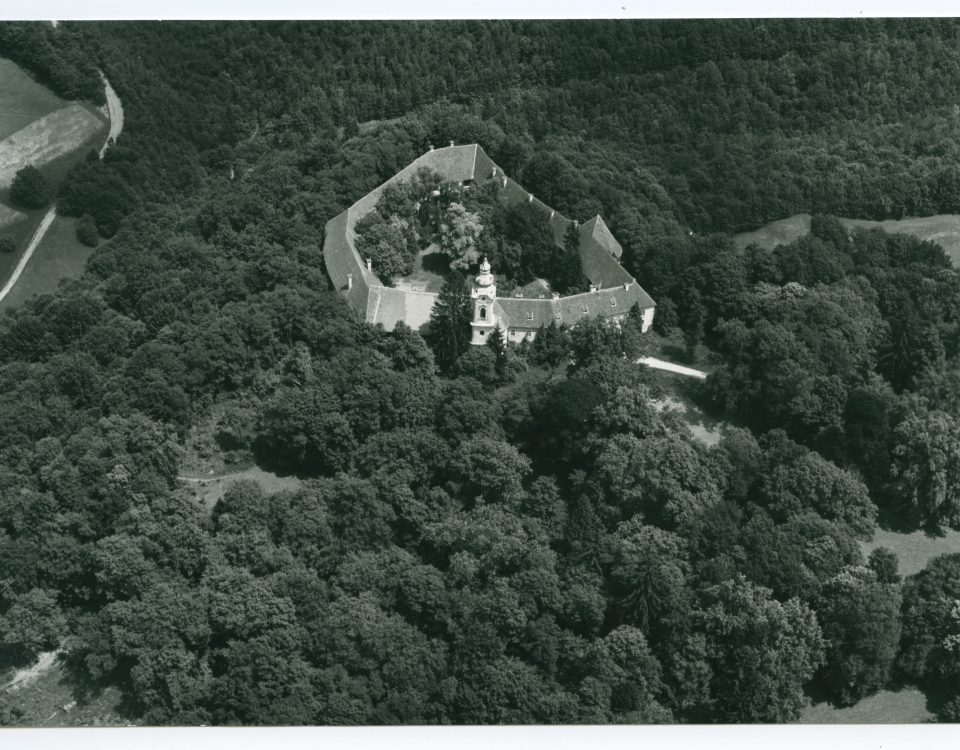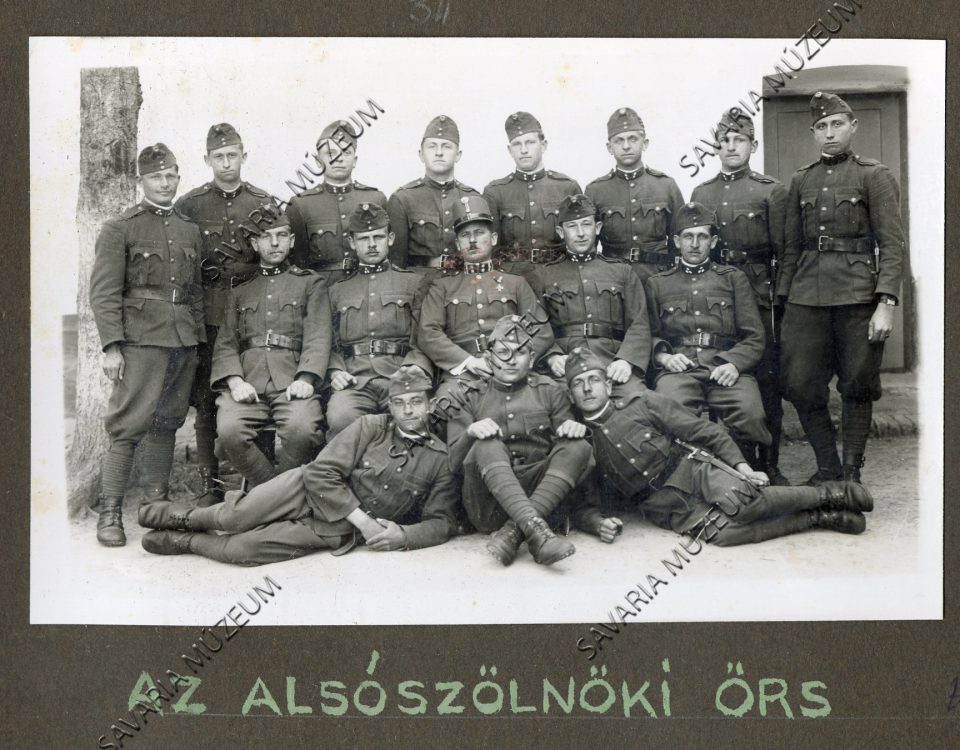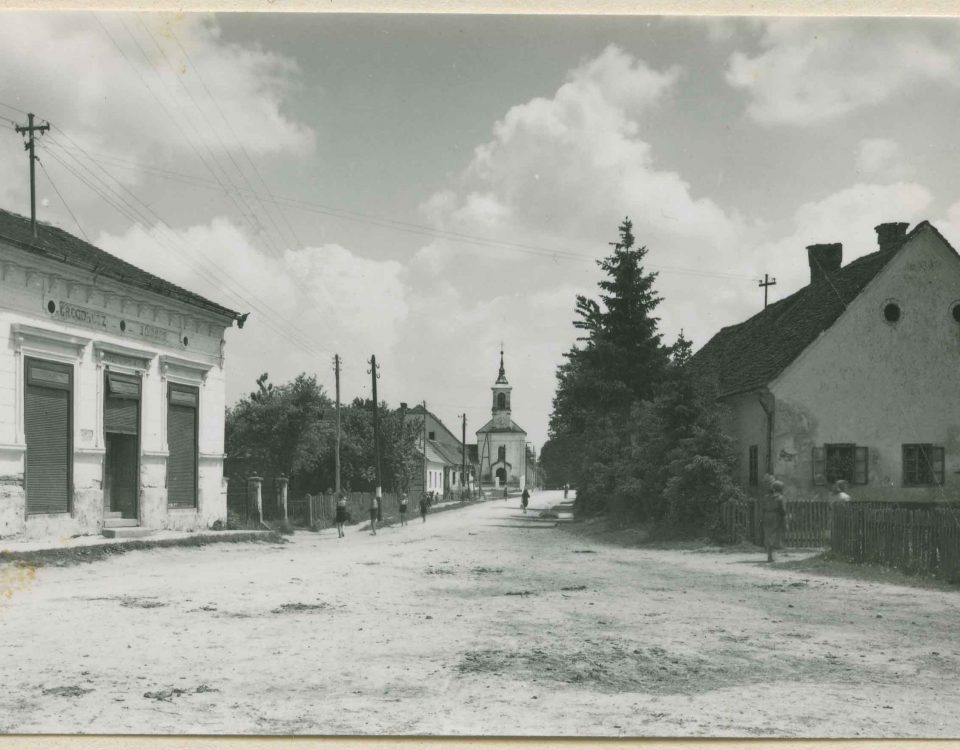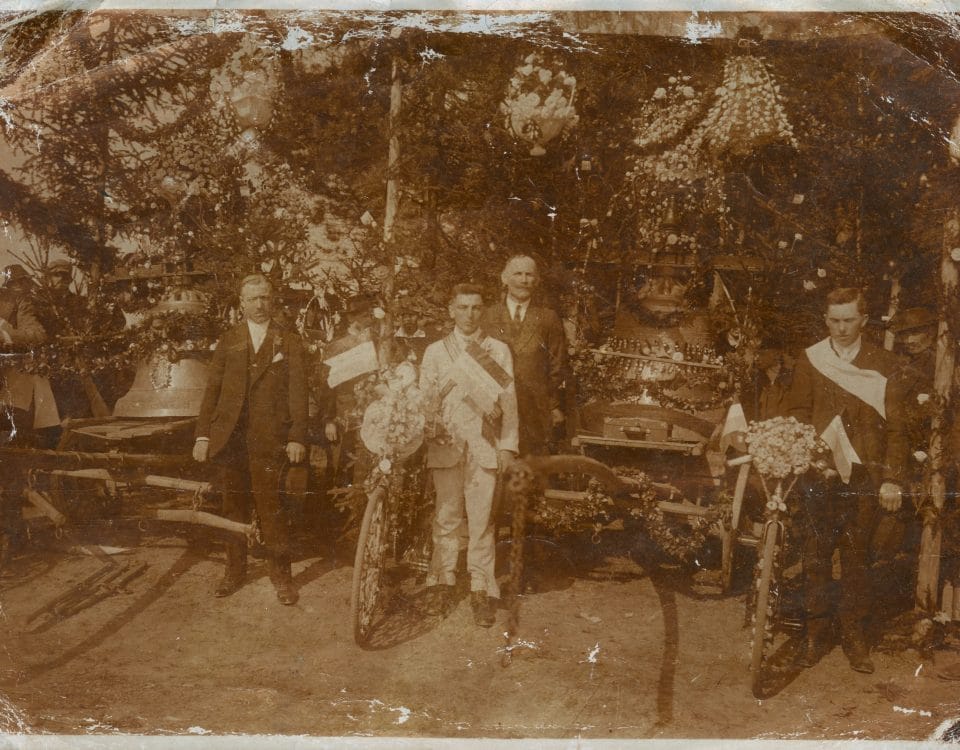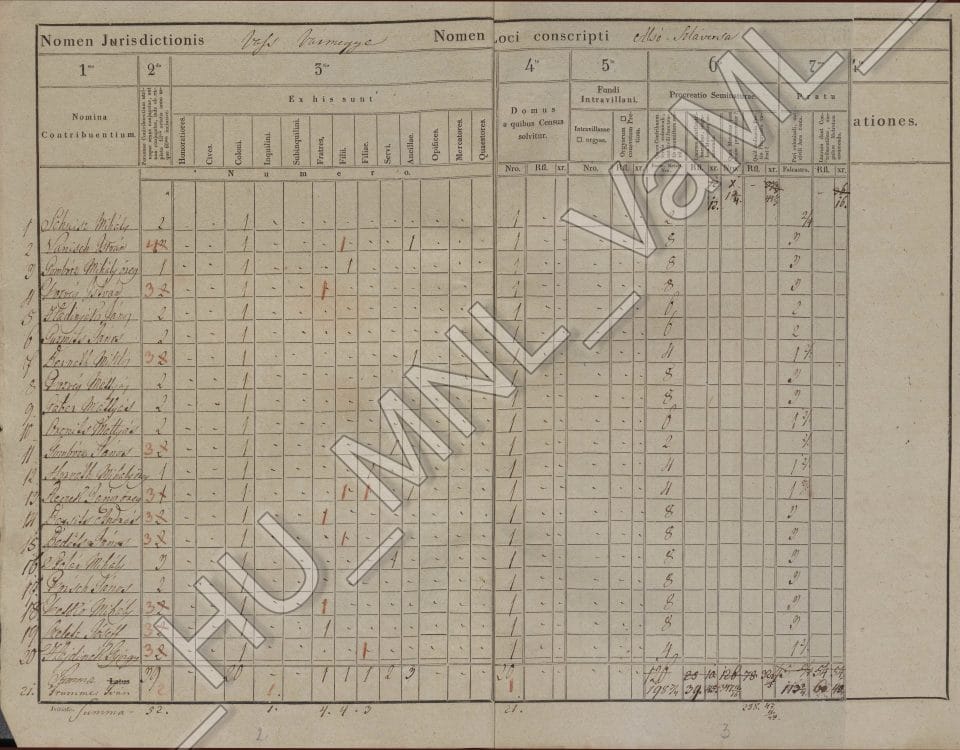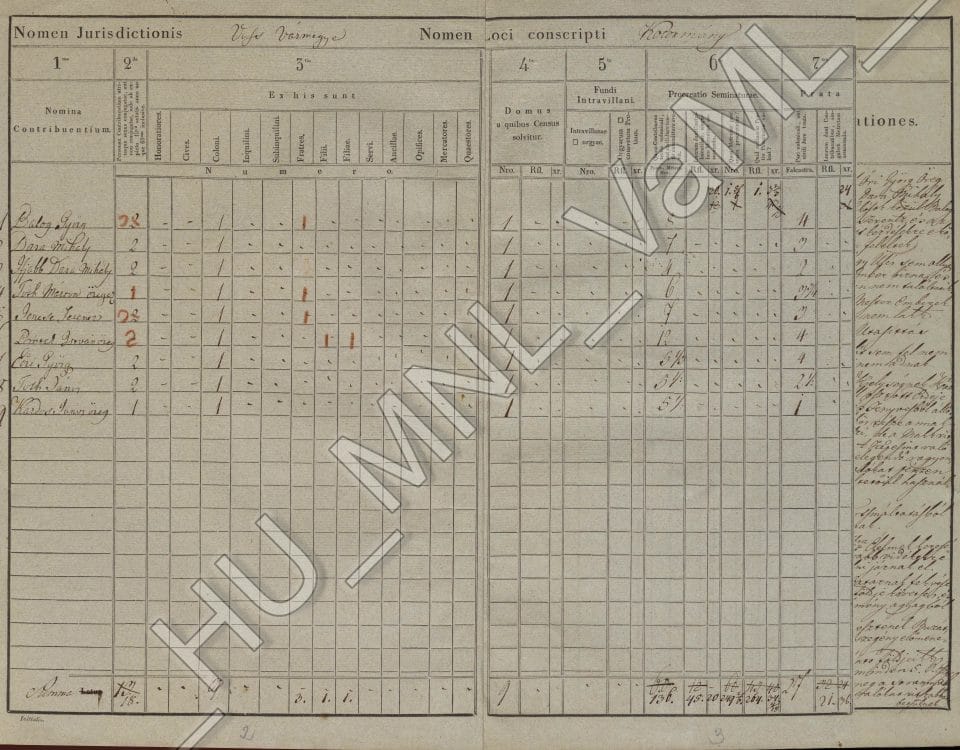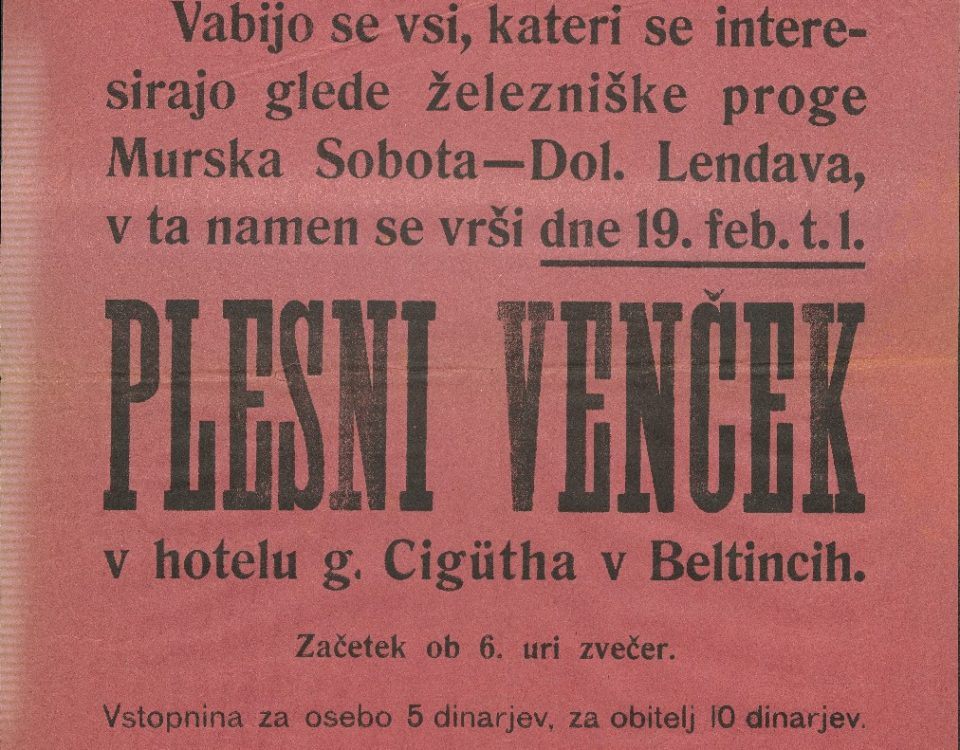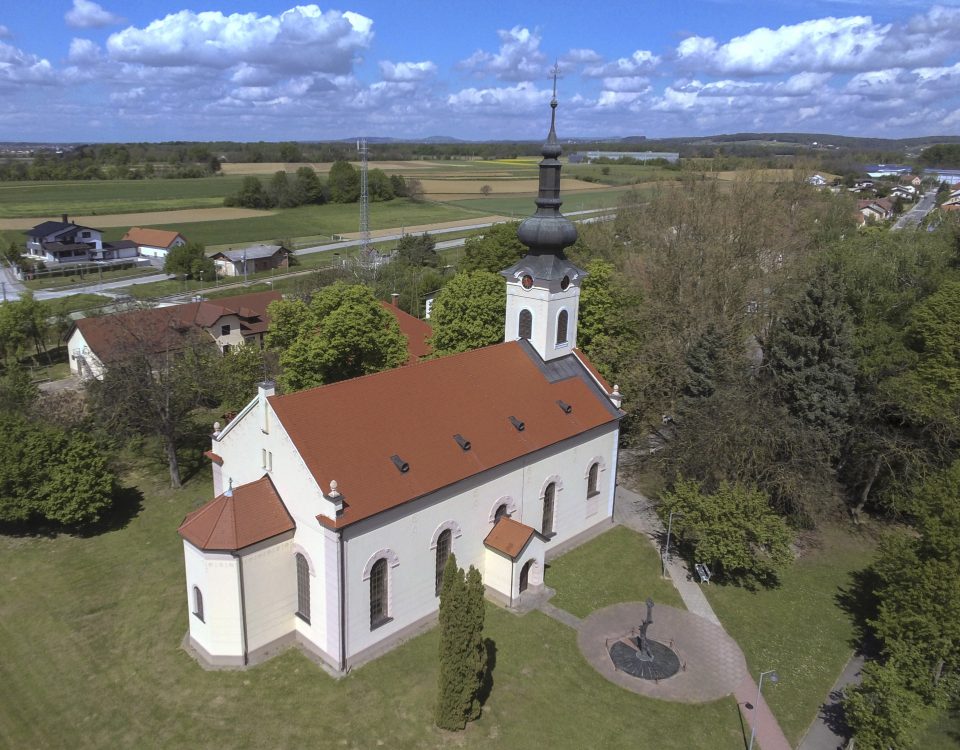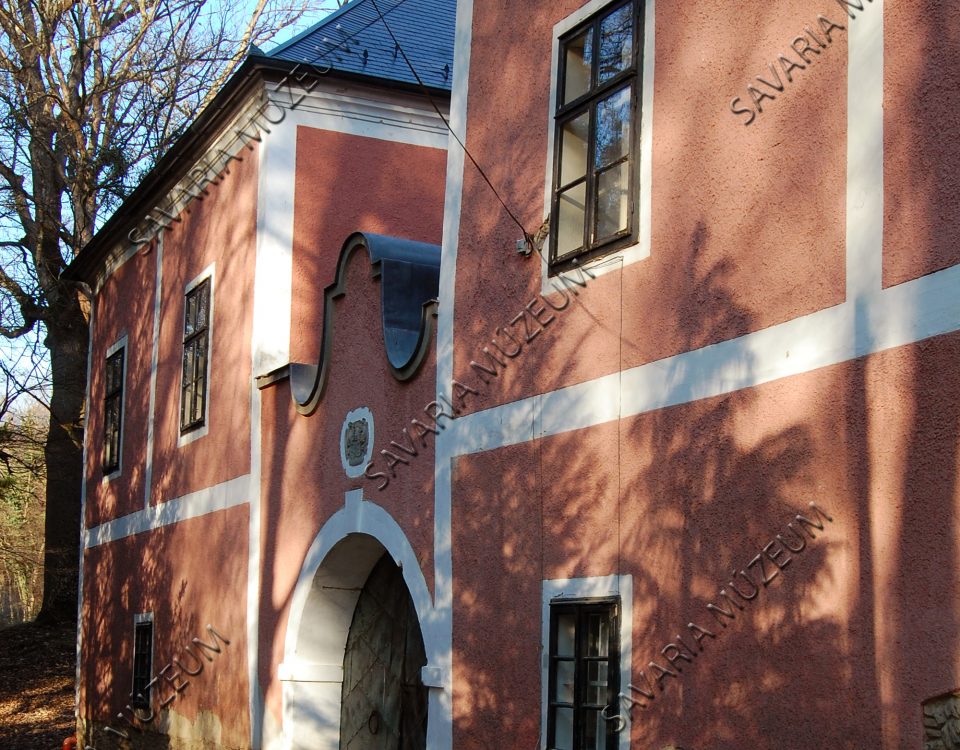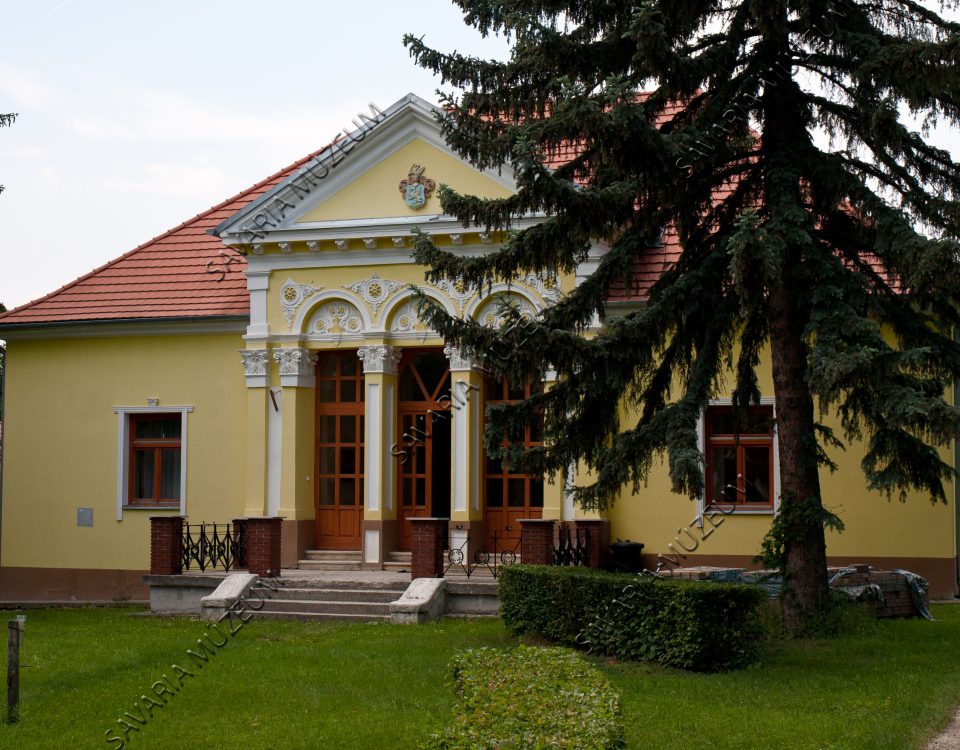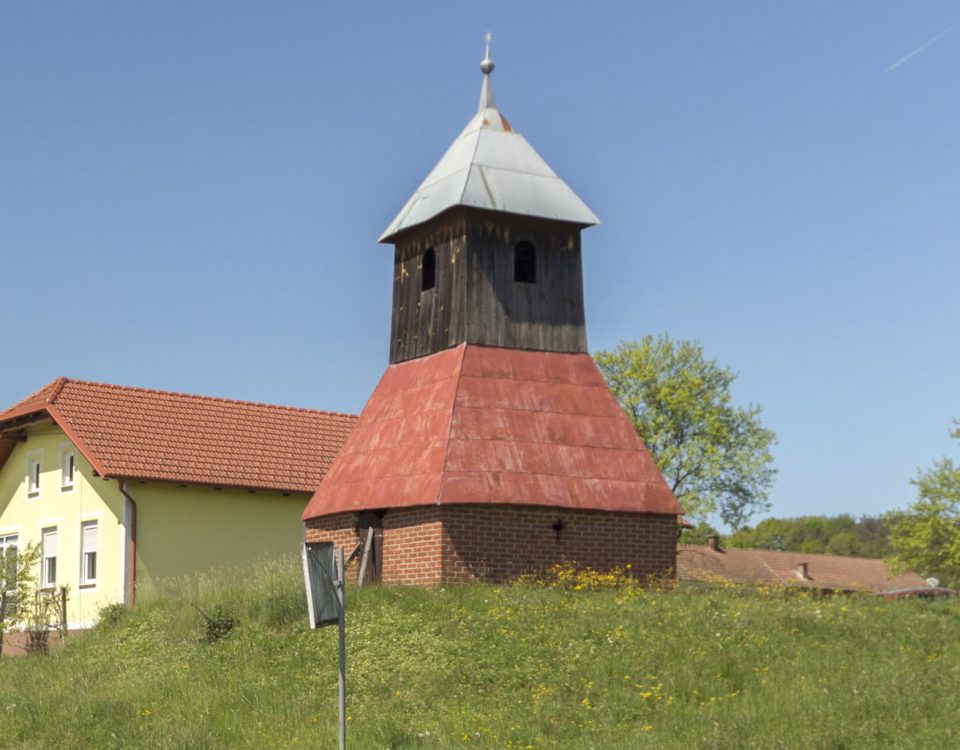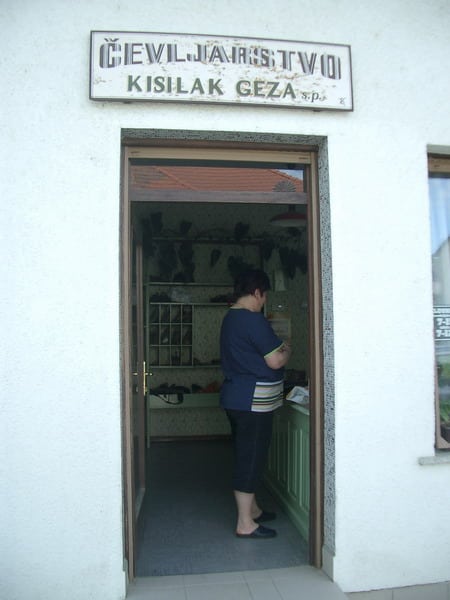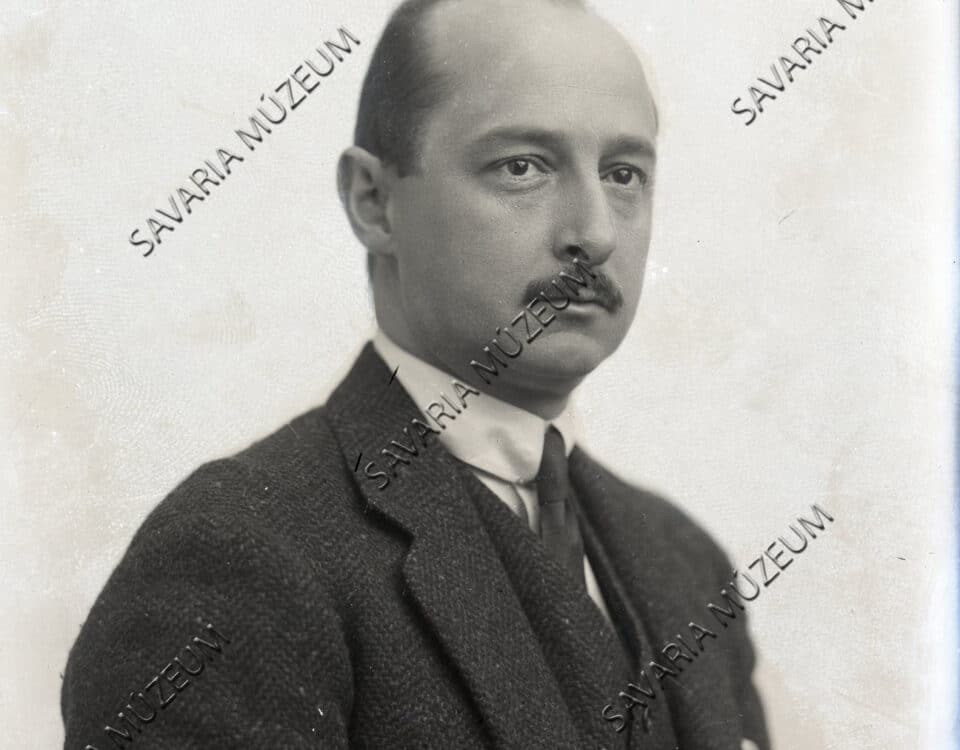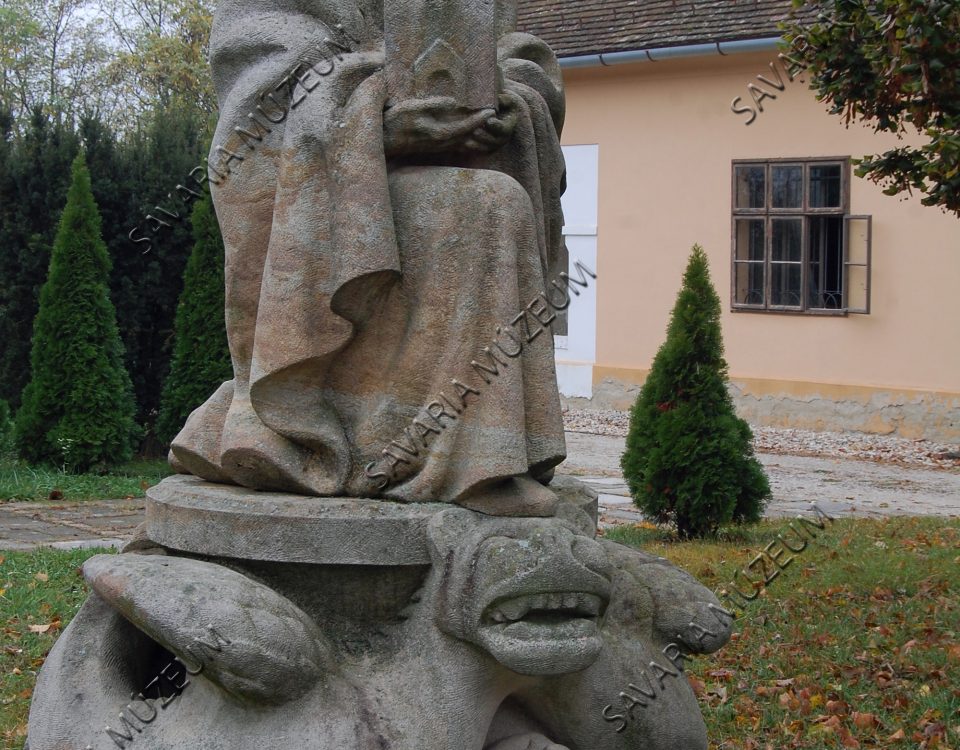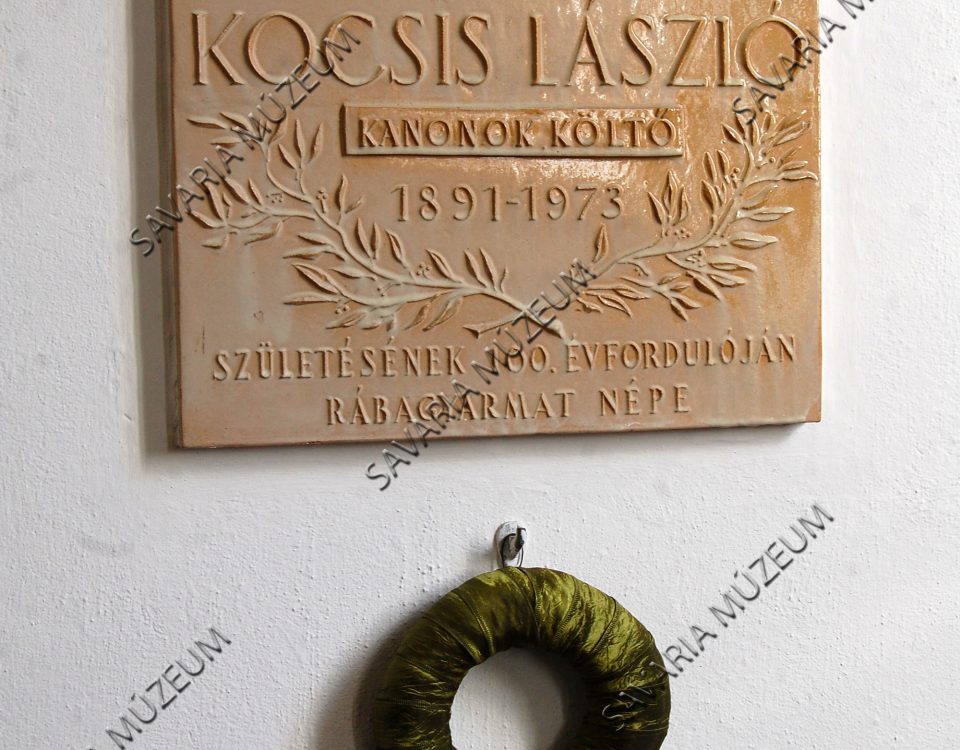Legend
Object
Archive material
Built cultural heritage
Intangible heritage
Personage
Audio-visual material
Random selection of objects
19. February, 2020
A five-hole long flute. The lower end is an octagonal block. The body of the instrument is artistically decorated. First the mould was carved, then this was filled in it with red, green, black, brown, and blue wax. Ornamental elements: men in long cloak, man and woman, sheep, bird, stylized flowers and geometric patterns. It…
5. March, 2020
Jože Kološa-Kološ was born on September 28, 1920 in Murska Sobota. He died on June 29, 1998. During his creative life, Kološ created a huge oeuvre. Kološ's works from around 1960 and later years represent the peak of his creative work. The black and white photograph depicts the Goričko Castle - aerial view.
30. April, 2020
The album was dedicated to the memory of by Mrs. Kálmán Horváth, Countess Geraldine Niczky, to commemorate the inauguration of the flag by the 11th Royal Border Army Battallion’s officers and staff. Since 1938, border guarding duties were usually carried out by Border Army units. The album was made by Erzsébet Derezsán, a craftswoman from…
18. August, 2020
Photo of Turnišče with the Chapel of St. Anthony of Padua. Jože Kološa - Kološ (1920-1998) worked for the weekly newspaper Vestnik. The photo was taken in the center of the village of Turnišče, showing the Saint Anton Chapel of Padua and a handful of people on the street and next to the house on…
Random selection of archive material
11. February, 2020
On Easter Monday 1924, new bells were consecrated at Pečarovci Parish, which were casted at the Anton Blazin Factory in Zagreb. The original bells were removed from the temple during World War I. At the dedication, Pastor Ivan Perša thanked the donors for their contributions. He highlighted the American donors Ivan Gomboc, Matjaš Rogan and…
21. May, 2020
The 1828 census corresponds to today 's tax return form. The unit is the head of the taxpayer family. The list contains the number of peasant farms, the size of the cultivated area, the varieties of crops, the different ways and costs of production in each region.
6. May, 2020
The 1828 census corresponds to today 's tax return form. The unit is the head of the taxpayer family. The list contains the number of peasant farms, the size of the cultivated area, the varieties of crops, the different ways and costs of production in each region.
11. February, 2020
Rail connections were poor in the Prekmurje Region. In 1909, a main route connected Murska Sobota, Zalalövő and Goričko, while there was no connection between the lowland villages and Lendava. Following the annexation of the Prekmurje to the Kingdom of Serbs, Croats and Slovenes, in 1924, Ljutomer and Murska Sobota were connected by a railway…
Random selection of built cultural heritage
11. February, 2020
Following Joseph II's edict of tolerance in 1781, the region’s first Lutheran parish was established in Puconci on August 4, 1783. The first church was much smaller and more modest than the present one, and it was built on December 8, 1784, on a plot donated by Count Miksa Batthyány. It was named after Alexander…
21. February, 2020
Built on the remains of a Roman building in the 16th-17thcentury, the castle is a late Renaissance-Baroque manor house from 1614. Its present form was established in 1815. The arched gateway has a special architectural value. The ground floor rooms have with barrel vaulted ceilings. Its hallway exhibits the life of the last owner, Dr.…
30. April, 2020
It was built in 1638. In 1720 Charles III donated the estate in Nemescsó to Mihály Weöres III, a captain in the Kuruc army, the founder of the family's Lutheran branch in Vas County. We do not know the date of the construction of the one-storey, L-shaped Baroque mansion on the Weöres estate, its new…
11. February, 2020
The bell towers standing separately were important socio-cultural and architectural elements of the Catholic and Lutheran countryside. The bell tolled at the time of hail, in the morning, at noon and in the evening, at church ceremonies, in the event of fire, at the time of decease... The bell tower was the center of the…
Random selection of intellectual cultural heritage
18. August, 2020
The cobbler's shop Kisilak is the last in Pomurje that makes shoes. In the 1930s, Karel had a lorry and 15 workers, who made and sold shoes at fairs all over Prekmurje, Croatia (as far as Legrad) and in Styria. Geza, Sr. took over his father’s workshop in 1962 and managed it up to 2010,…
20. February, 2020
The legend of Ostffy Miklós in the Scythe House is about a local landlord who stuck to his Protestant faith during the Counter-Reformation. Ostffy's castle was destroyed by the Austrian emperor's troops. He escaped but was later captured. According to the legend, he was locked in the scythe house in Vienna, where scythes cut up…
10. February, 2020
Whenever the Mura River flooded, it carried away the mills and the boats, and the river flooded the fields and houses while creating a new bed for itself. These were the times when büjranje (dam repair, dam building) was needed along the river – by reinforcing the river bed, and building dams to withhold the…
20. February, 2020
The park guard of Rátót finds a gourd on the outskirts of the village. He doesn't know what it is. The wise elders of the village think that it is a dragon egg or foal egg. This is a village-mocking, folk genre. A humorous story about the ignorance of the villagers.
Random selection of personality
30. April, 2020
Politician, from 1904 member of the House of Lords. In 1919 he was one of the leaders of the Anti-bolshevist Comité in Vienna. He was appointed Commissioner-General of Transdanubia, owing in particular to the fact that after the Trianon Treaty a referendum was held in Sopron and in the neighboring villages to decide their affiliation.…
18. August, 2020
Builder of the Ják Monastery and Church. He was the Bailiff of Zala, was born in Vasvár (1215-1245). Ban of Slavonia (1224). We do not know the dates of his birth and death. When the church was consecrated in the spring of 1256, he was no longer living. Probably it his funeral that is depicted…
8. April, 2020
She came from a Reformed family of pastors. She graduated from the Kőszeg Lutheran Grammar School, obtaining her degree as primary school teacher in Pápa, and her degree as secondary school teacher in Pécs. Between 1949 and 1955 she was a political prisoner in Siberia. In 1961, she created a school collection and with the…
3. March, 2020
The priest-poet was born in Szőce, but spent his childhood in Rábagyarmat. He graduated from high school in Szombathely, and attended the seminary of Veszprém and Pécs. He served in various parishes as chaplain in Transdanubia. In the first half of the 1930s he was a religion teacher in the schools of Pécs, then a…
Random selection of audiovisual material
3. March, 2020
Sojenice (Sojenice) / Fate fairies In the Slovenian Rába Region, fate fairies predict the fate of a child at the birth. Local version of an international motif. (ATU 934)
3. March, 2020
A wedding song that was sung when the bride left her home.
3. March, 2020
Stolnjek prestri se (Prtič pogrni se) / Wishing-tablecloth The Rába Region’s Slovenes’ version of the internationally known “Wishing-Table” tale . (ATU 563)
11. February, 2020
They were singing this lullaby when the baby was rocked in a hutch or cradle. A variation of three words (heje, baba, bijja) gives the lyrics of the song. The lullaby was collected in 1972 by Antal Békefi.

